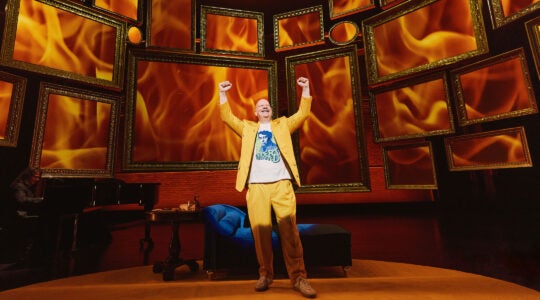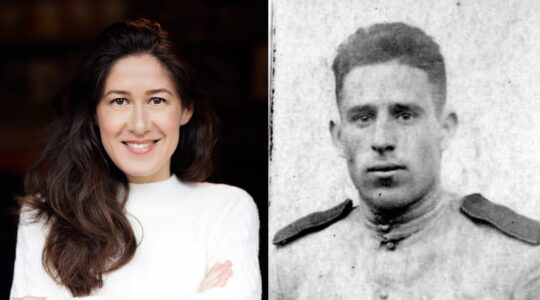During the Third Reich, the Brandenburg Gate, a landmark in the center of the German capital, was a symbol of Nazi supremacy, through which uniformed soldiers would march.
Last week, the site was a symbol of German repentance.
On the 75th anniversary of Kristallnacht, the Nazi-orchestrated pogroms against the disenfranchised Jews of Germany and Austria that clearly showed the Reich’s anti-Semitic face to the world, Jewish faces dominated the Brandenburg Gate.
As part of a national commemoration of the so-called Night of Broken Glass, portraits of prominent Berlin Jews — among them actors, intellectuals, artists and athletes — who were persecuted by the Nazi government were projected onto the Gate.
Throughout Germany, commemoration events recalled the events of Nov. 9-10, 1938, when hundreds of synagogues were burned, thousands of Jewish-owned businesses were ransacked and some 30,000 Jews were arrested and sent to concentration camps.
Kristallnacht, Chancellor Angela Merkel declared at a memorial event in Berlin, was “a real low point in German history … an event that humiliated Jews in an unbelievable way.”
In many cities and towns, Germans held candlelight vigils, listened to the stories of Holocaust survivors and gathered at Jewish cemeteries.
In Berlin, leaders of the Catholic and Protestant churches took part in a silent march to the site of a former synagogue, President Joachim Gauck visited a wartime workshop whose non-Jewish owned had saved his Jewish staff from deportation, and more than 100 retailers affixed adhesive tape to their shop windows to resemble the jagged shape of broken glass.
Also in Berlin, guided tours were conducted through once-Jewish neighborhoods of the city. The guides noted venues where Jews had studied or prayed or shopped. Some Berliners stopped to polish some of the city’s 5,000 Stolpersteine, brass “stumbling blocks” plaques embedded in sidewalks that identify where Jews had lived.
The New York Jewish Week brings you the stories behind the headlines, keeping you connected to Jewish life in New York. Help sustain the reporting you trust by donating today.




